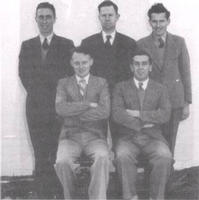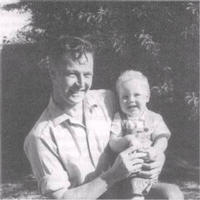


Memories of the Bureau, 1946 to 1962
Foreword
Terminology
Prologue
Preface
Chapter 1: The Warren Years, 1946 to 1950
Chapter 2: International Meteorology
Chapter 3: The Timcke Years, 1950 to 1955
Chapter 4: A Year at the Massachusetts Institute of Technology
Chapter 5: The Dwyer Years, 1955 to 1962
Leonard Joseph Dwyer—A Complex Character
Reorganising the Bureau
Public Weather Services
Forecasts for the General Public
Importance of Radio Stations
The Advent of Television
Automatic Telephone Forecast Service
Beacons
Wording and Verification of Forecasts
Warnings
Services for Aviation
Atomic Weapons Tests
Atomic Weapons Tests—Mosaic G1 and G2
Atomic Weapons Tests—Buffalo 1, 2, 3 and 4
Atomic Weapons Tests—Operations Antler, 2 and 3
Atomic Weapons Tests—Minor Trials
Instruments and Observations
Radiosondes
Radar/Radio Winds and Radar Weather Watch
Automatic Weather Stations
Sferics
Meteorological Satellites
Telecommunications
Tropical Cyclones
Bureau Conference on Tropical Cyclones
International Symposium on Tropical Cyclones, Brisbane
Hydrometeorology
Design of Water Storages, Etc
Flood Forecasting
Cloud Seeding
Reduction of Evaporation
Rain Seminar
Cloud Physics
Fire Weather
Research and Special Investigations
International Activities
The International Geophysical Year
The Antarctic and Southern Ocean
International Symposium on Antarctic Meteorology
International Antarctic Analysis Centre
ADP, EDP and Computers
Training
Publications
Management Conference
Services Conference
CSIRO and the Universities
Achievements of the Dwyer Years
Chapter 6: A Springboard for the Future
Appendix 1: References
Appendix 2: Reports, Papers, Manuscripts
Appendix 3: Milestones
Appendix 4: Acknowledgements
Appendix 5: Summary by H. N. Warren of the Operation of the Meteorological Section of Allied Air Headquarters, Brisbane, 1942–45
Endnotes
Index
Search
Help
Contact us

Achievements of the Dwyer Years (continued)
Other services included those for civil and military aviation, for the WRE rocket range and for the UK's testing of atomic weapons in Australia. The Bureau significantly increased forecast, warning and consultative services for farmers and pastoralists, for building and other industries and for commercial and business companies. Special forecasts and other information were provided to the organisers of royal tours and the Olympic Games held in Melbourne in 1956.The Bureau's network of observations was considerably expanded and included 21 radar wind-finding stations, 16 of which also observed occurrence and movement of precipitation, a facility which was extremely valuable in tropical cyclone forecasting and warning. Two additional radar stations were installed near Cairns and at Cape Byron specifically for weather watching. Plans were well advanced for the installation of a radar for weather watching and research on top of the physics building of the University of Melbourne.

The circular mentioned that fourteen new stations were added to the radiosonde network. The frequency of flights and altitudes reached were considerably increased. A new desert station with surface, radiosonde and radar wind equipment was installed at Giles.
With the cooperation of the US, Australia was involved in the interpretation of data from meteorological satellites. Some time later these observations were to provide a wealth of observations from data sparse areas, particularly the oceans of the southern hemisphere.
The circular indicated that two sferics (lightning discharge) networks had been installed and operated and that some AWS had been procured, installed and operated.
The telecommunications system, crucial for the preparation and dissemination of Bureau forecasts and warnings was greatly improved with a higher-speed teletype system and facsimile.

The use of the Bureau's punch-card system was upgraded with a data bank of some nine million cards increasing by 750 000 a year. A close watch was kept on overseas developments in ADP, particularly the use of electronic computers for NWP.
People in Bright Sparcs - Dwyer, Leonard Joseph
 |
Bureau of Meteorology |  |
© Online Edition Australian Science and Technology Heritage Centre and Bureau of Meteorology 2001
Published by Australian Science and Technology Heritage Centre, using the Web Academic Resource Publisher
http://www.austehc.unimelb.edu.au/fam/1138.html